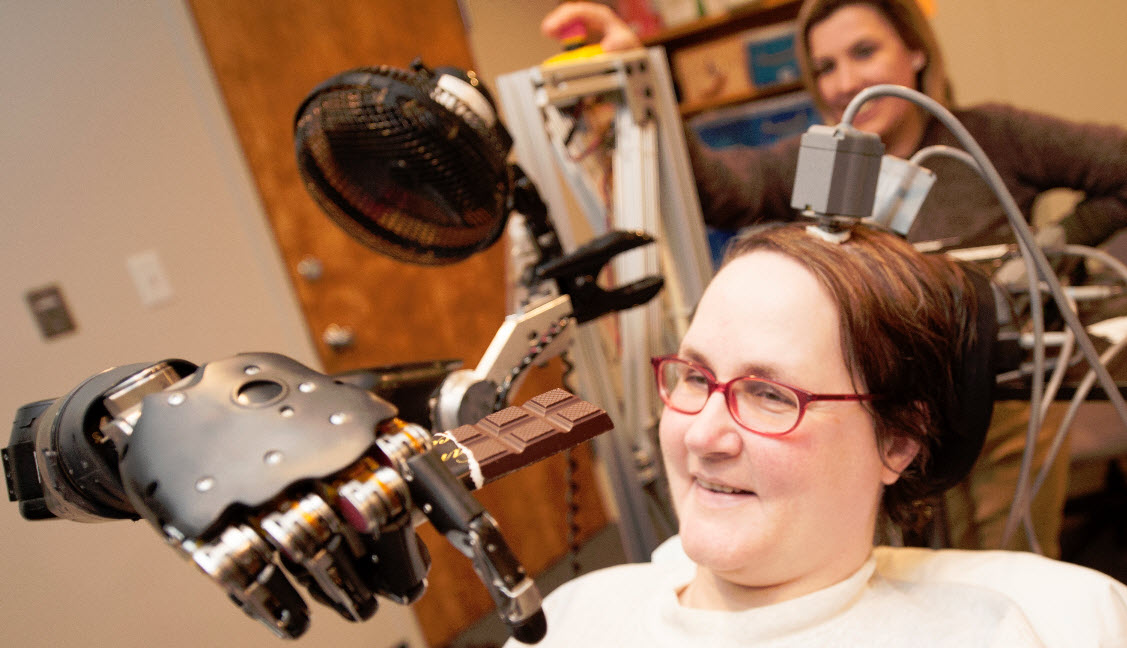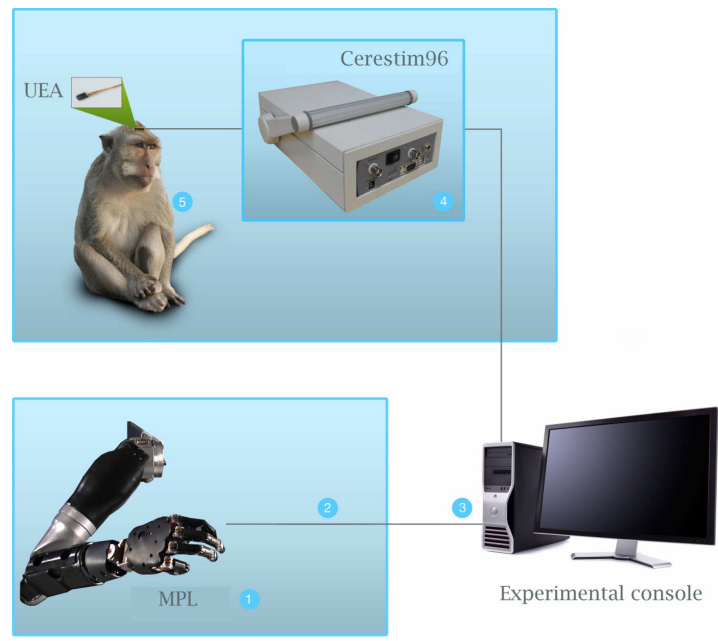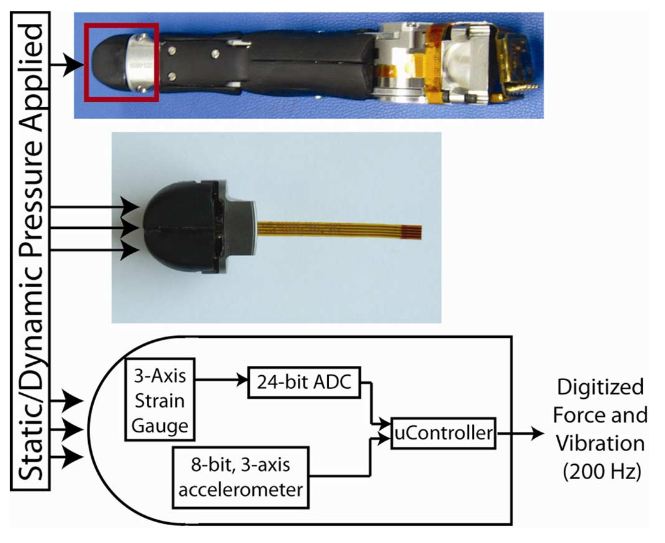Creating a sense of touch in a prosthetic hand
May 13, 2013

A quadriplegic patient brings a chocolate bar to her mouth, using a robot arm she is guiding with her thoughts (via the implant in her head). But what if the robot had sensors so she could also control its grip? (Credit: UPMC)
Scientists have made tremendous advances toward building lifelike prosthetic limbs that move and function like the real thing.
But what’s missing is a sense of touch, so a patient knows how hard he or she is actually squeezing something, or exactly where the object is positioned relative to his or her hand.
“If you lose your somatosensory [body senses] system, it almost looks like your motor system is impaired,” he said.
“If you really want to create an arm that can actually be used dexterously without the enormous amount of concentration it takes without sensory feedback, you need to restore the somatosensory feedback.”
This is the related to a similar problem with robots (see “Related” below), where researchers have built better sensors into their the robots’ limbs and hands, along with better processing systems and control systems.
How to make a monkey believe a robotic hand is its own

Somatosensory prosthesis. (1) Mechanical device presses against the modular prosthetic limb (MPL). Its sensor (2) sends digitized force and vibration data to a (3) computer console, which computes the necessary corresponding stimulation level and programs pulses to (4) a neurostimulator, which (like a Parkinson’s neurostimulator) delivers electrical stimuli to (5) an electrode array (UEA) in the monkey’s brain, causing it to perceive the pressure applied to the prosthetic limb (credit: J.A. Berg et al./IEEE Transactions on Neural Systems and Rehabilitation Engineering)
So a team of University of Chicago neurobiologists, headed by Sliman Bensmaia, assistant professor of organismal biology and anatomy, came up with an idea: why not try the same thing, starting with a monkey?
To restore the somatosensory feedback, they equipped a robotic hand with pressure sensors.
These send electrical signals for processing, and from there to electrodes implanted in the brain to recreate the same response to touch as a real hand.
The researchers used rhesus macaques that were trained to respond to stimulation of the hand.
Their hands were hidden so they wouldn’t see that they weren’t actually being touched, and were given electrical pulses to simulate the sensation of touch.
The animals had electrodes implanted into the area of the brain that responds to touch to check the animals’ responses to each type of stimulus.
By combining the poking and brain-response data, the researchers were able to create a mathematical function that described the level of electrical pulses in the brain corresponding to different levels of physical pokes of the hand.

Top: Photograph of the fully integrated finger of a highly dexterous prosthetic hand (Modular Prosthetic Limb, MPL). Middle: Photograph of the MPL’s fingertip sensor node (FTSN). Bottom: Block diagram of FTSN. (Credit: J. Berg et al./IEEE Transactions on Neural Systems and Rehabilitation Engineering)
Then,switched to a prosthetic hand that was wired to the brain implants. They touched the prosthetic hand with the physical probe, which in turn sent similar electrical signals to the brain.
Bensmaia said that the animals performed identically whether poked on their own hand or on the prosthetic one.
“This is the first time as far as I know where an animal or organism actually perceives a tactile stimulus through an artificial transducer,” Bensmaia said.
“It’s an engineering milestone. But from a neuroengineering standpoint, this validates this function. You can use this function to have an animal perform this very precise task, precisely identically.”
Human trials
The FDA is in the process of approving similar devices for human trials, and Bensmaia said he hopes such a system is implemented within the next year. Producing a lifelike sense of touch would go a long way toward improving the dexterity and performance of prosthetic hands (or robot hands, for quadriplegics).
He said it would also help bridge a mental divide for amputees or people who have lost the use of a limb. Until now, prosthetics and robotic arms feel more like tools than real replacements, because they don’t produce the expected touch sensations .
“If every time you see your robotic arm touching something, you get a sensation that is projected to it, I think it’s very possible that in fact, you will consider this new thing as being part of your body,” he said.